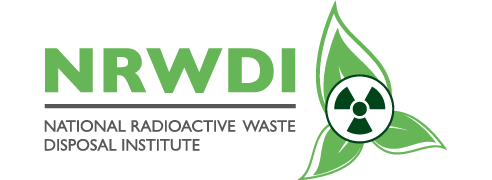Sierra Prieta, Dominican Republic — While the Dominican Republic generates a relatively low volume of radioactive waste, it has prioritized their safe and secure treatment.
Radioactive sources are used in fields such as medicine, industry and mining. Once they have served their purpose, such so-called disused sources must be safely and securely stored or disposed of because they may pose hazards to public safety, the environment and to national security. Protecting the public and making sure that radioactive material does not fall into the hands of criminals are, therefore, a priority for the government, said Vice-minister of Energy and Mines María de los Ángeles Peña.
Any disused radioactive source identified in the country is transported, characterized, classified, conditioned and stored in a centralized facility built in 2010 in Sierra Prieta, outside the capital Santo Domingo. The amount of time the sources are kept in this safe and secure storage can range from a few years to up to 50 years, depending on their level of activity and the period for which they remain radioactive.
“All radioactive sources that are no longer usable end up in the storage facility,” Ángeles Peña said. “We do this to ensure not only nuclear safety, but also nuclear security, which we take very seriously.”
The facility is vigorously protected with fences and guards and constantly monitored with cameras. An armed military guard is present round the clock. The facility is equipped with radiation detectors provided by the IAEA. A team of professional staff trained under IAEA technical cooperation projects is in charge of the operation, maintenance and regular inspection of the storage facility.
Around 170 sources from applications in hospitals and industry as well as so-called orphan sources — radioactive sources that are lost and then found again — detected in scrap metal industries have found a home in the facility. Some are high-activity sources, meaning they emit high levels of radiation, such as those used in radiotherapy to treat cancer. Others are low-activity sources, such as those used for industrial and research applications.
“Radiotherapy can do wonderful things,” said Luis Morilla, the engineer responsible for the operations of the storage facility. “If you look at brachytherapy, for example, you see how well it can treat cervical cancer. But after a while, once these sources are no longer usable, hospitals need to dispose of them. And nobody wants to keep them; nobody wants anything to do with waste.”
Other disused sources come from mining, agriculture and construction. Gold processors, for example, use radiotracers — chemical compounds containing radioisotopes that emit radiation — to study flow patterns. Since the Dominican Republic has the biggest gold mines in Latin America and the Caribbean, many sources come from this industry.
Spreading the word
The work of the staff at the facility goes beyond storing disused sources, Morilla added. “The key here is that we’ve established a network of professionals all around the country and across multiple disciplines,” he said, to spread the knowledge about the importance of handling radioactive material safely and securely.
In 2013, the National Energy Commission established a network for the safe and secure transport of radioactive materials. As a result, professionals from all relevant disciplines regularly meet to exchange information.
The network connects government officials, police and customs officers, emergency preparedness and response professionals, nuclear regulators, transport officials and port and airport staff. Its aim is to prepare all relevant stakeholders to respond to an emergency. Under the network, the National Energy Commission coordinates training courses in nuclear safety and security and organizes emergency preparedness and response exercises.
“The idea is to apply the safety standards and security guidance we learn from the IAEA to all areas in which radioactive sources are used across the country, even before disposal,” Ángeles Peña said. In the past two years, they have trained more than 30 experts in nuclear technology, safety and security through IAEA expert missions and fellowships, she added.
In line with the radioactive waste management national strategy, Dominican authorities don’t expect to store large volumes of sources in the future. “Our first option is to give radioactive sources back to those who provided them,” Morilla said. “But some sources cannot be repatriated. We have historical sources and donated sources, for example, that we just can’t give back.”
